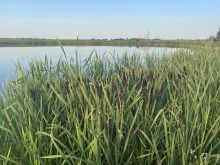Producers will see a height difference in some of the newer canola varieties Monsanto is bringing to Western Canada.
Kurt Wickstrom, the company’s canola product manager for North America, said the goal with slightly shorter varieties is to still have high yield potential, but to reduce the amount of stem and leafy material that producers have to put through their swathers and combines.
“It’s not what goes through the chopper, it’s what goes in the hopper,” he said during a recent tour of one of the company’s trial plots near Portage la Prairie, Man.
Read Also

Europe holds promise for Canadian lentils
Pulse Canada is trying to help boost lentil consumption in Europe, which is already the fourth largest market.
Monsanto’s top focus when breeding for new canola varieties is higher yields, but Wickstrom said it doesn’t necessarily take plants that grow two metres tall to achieve that.
Using what he described as “elite germplasm” drawn from other parts of the world, Monsanto can produce plants that are not quite as tall but still able to provide high yield potential.
One of the varieties Monsanto will be releasing to producers this fall is 33-95, a shorter plant that has semi-dwarf genetics. Wickstrom said in trials last year the variety consistently yielded up to eight percent higher than 34-55, another Monsanto product that is one of the top yielding canolas in Western Canada. With 33-95, pods develop on most of the plant, creating the potential for good yields.
Monsanto already has other canola varieties on the market, such as 32-35, which support the notion that canola crops do not have to grow as tall as sunflowers to deliver high yields. Wickstrom described the company’s 32-35 variety as a smaller canola that matures early and still has tremendous yield potential.
Monsanto will bring more attention to the subject of plant height this fall when company representatives start talking about what Wickstrom called the harvest index, which is based on a measure of how much of the canola plant has pods and how much of it is only leaves and stems.
While a certain amount of plant stem is needed when swathing the crop to anchor it to the stubble, an abundance of stems and leafy material can slow the work of swathing and combining.
The interest in breeding shorter canola varieties was spurred partly by Monsanto’s purchase two years ago of Limagrain Canada Seeds Inc., a Saskatchewan based canola seed research, production and marketing company. Breeders there were already working in that direction, because of an emphasis on standability and harvestability, said Norm Sissons, Monsanto’s technology manager of seed for Canada.
While a canola crop can lose yield potential if the plants grow too short, Wickstrom said the shorter plants in Monsanto’s breeding program do not yet appear to be approaching that threshold.














